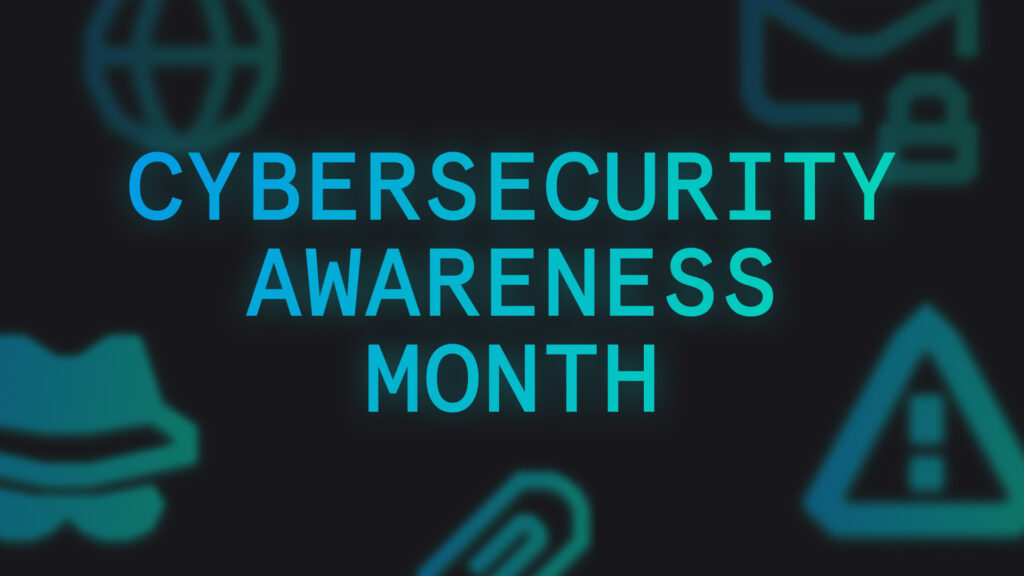October is Cyber Awareness Month, and this year’s theme is “Do your part. #BeCyberSmart.”
Fun fact: Cyber Awareness Month started back in 2004, the same year a former AOL software engineer stole 92 million screen names and email addresses and sold them to spammers.
Sadly, that’s peanuts compared to more recent breaches.
Incidents involving insider threats are at an all-time high, phishing incidents are doubling and even tripling in frequency year-on-year, and the cost of a breach is now over $4 million.
This is all to say that cybersecurity is more important than ever. And at Tessian, we live by the motto that cybersecurity is a team sport.
So, to help you educate and empower your employees, we’ve put together a toolkit with over a dozen resources, including:
You can download them all for free, no email address or other information required.
But, that’s far from the only content we have to share…
By 2024, CEOs will be personally responsible for data breaches. So it’s essential they (and other execs) understand the importance of privacy, data protection and cybersecurity best practices.
To help you out, we’ve published an eBook which breaks down:
- How different regulations have changed how businesses operate
- How cybersecurity and compliance can be leveraged as a business enabler
- The financial and operational costs of data breaches
OOO Templates
OOO emails can contain everything a hacker needs to know to craft a targeted spear phishing attack…
- Where you are
- How long you’ll be gone
- Who to get in touch with while you’re away
- Your personal phone number
Use these templates as a guide to make sure you don’t give too much away👇🏼
Cyber Awareness Month is all about raising awareness and sharing best practices, and we know the #1 source of trusted information and advice for CISOs are…other CISOs….
That’s why we’ve created a hub filled with dozens of fireside chats and panel discussions about enterprise security, spear phishing, data loss prevention, leadership, and the human element.
Sign-up for free and hear from some of the biggest names in the industry.
Did you know at least 800 emails are sent to the wrong person in organizations with 1,000 employees every year.
While it’s easy to shrug something like this off as a simple mistake, the consequences can be far-reaching and long-term.
Learn more, including how to prevent mistakes like this.
While we’re partial to our own podcast – RE: Human Layer Security – we’ve learned from the best in the business.
To get our fix of cybersecurity breaking news, threat intel, and inspiring interviews, we regularly tune into these podcasts:
- The CyberWire Daily
- The Many Hats Club
- WIRED Security
Get the full breakdown here.
As a security or IT leader, researching and vetting security solutions is step one. Step two involves convincing key stakeholders like the CEO, CFO, and the board that the product needs to be implemented, that it needs to be implemented now, and that it’s worth the cost.
This is easier said than done…
So, how do you communicate risk and make a compelling case to (eventually) get buy-in from executives?
We talked to security leaders from some of the world’s most trusted and innovative organizations to find out what they do to get buy-in from CxOs.
Here’s a summary of their tips.
While most of us have been working remotely or in a hybrid environment for well over a year, we know that more than half of IT leaders believe employees have picked up bad cybersecurity behaviors since working remotely.
This eBook offers plenty of helpful reminders, including:
- The risk involved in sending work emails “home”
- Why using public Wi-Fi and/or your personal device as a hotspot aren’t good ideas
- Best practice around using cloud storage to share documents
- How to physically protect your devices
- Top tips for businesses setting up remote-working policies
We know you’re working hard to train employees to spot advanced impersonation attacks…but every email looks different.
A hacker could be impersonating your CEO or a client. They could be asking for a wire transfer or a spreadsheet. And malware can be distributed via a link or an attachment.
But it’s not all bad news. While – yes – each email is different, there are four commonalities in virtually all spear phishing emails.
Download the infographic now to help your employees spot the phish.
Whether it’s done to work from home (or outside of the office), to print something, or to get a second opinion from a friend or partner, most of us have sent “work stuff” to our personal email accounts.
And, while we might think it’s harmless…it’s not.
In this article, we explore the reasons why employees might send emails to personal accounts, why sending these emails can be problematic, and how security leaders can solve the problem.
Looking for more helpful content? Sign-up to our weekly newsletter, or follow us on LinkedIn and Twitter (or do all three!).
Andrew Webb
Senior Content Manager












